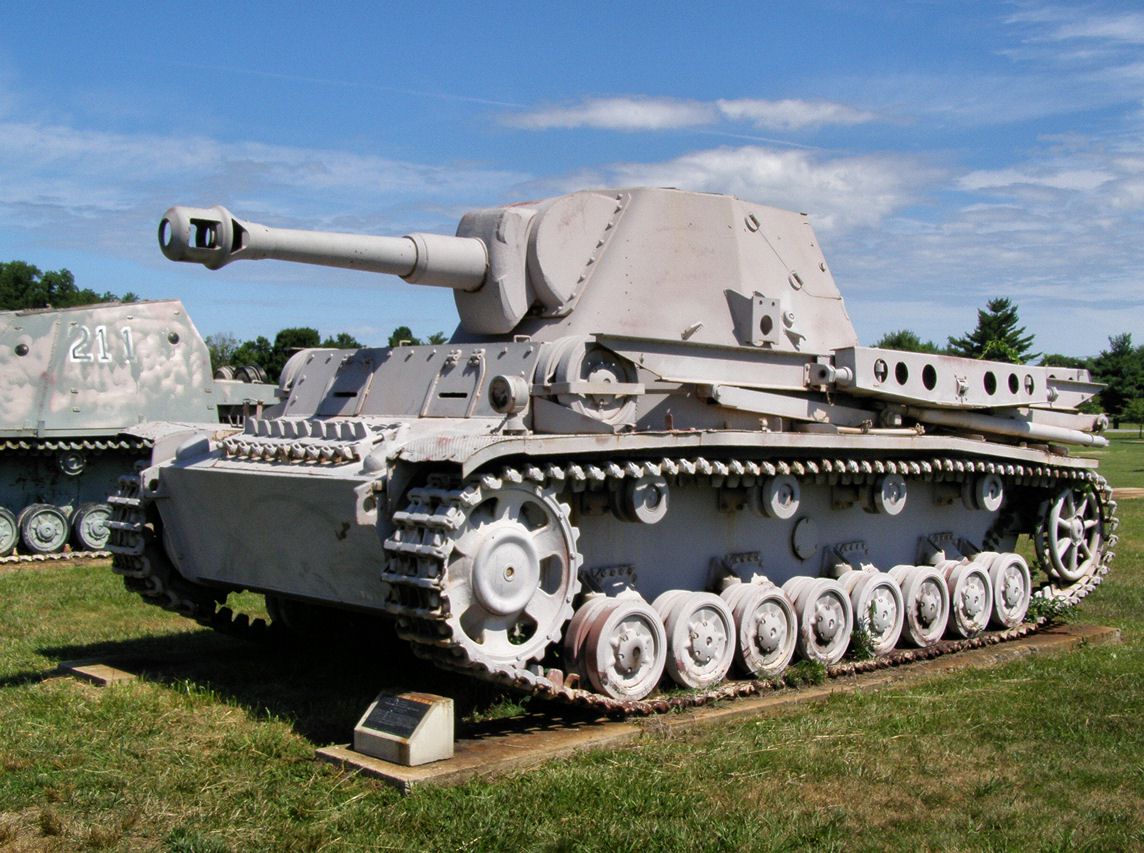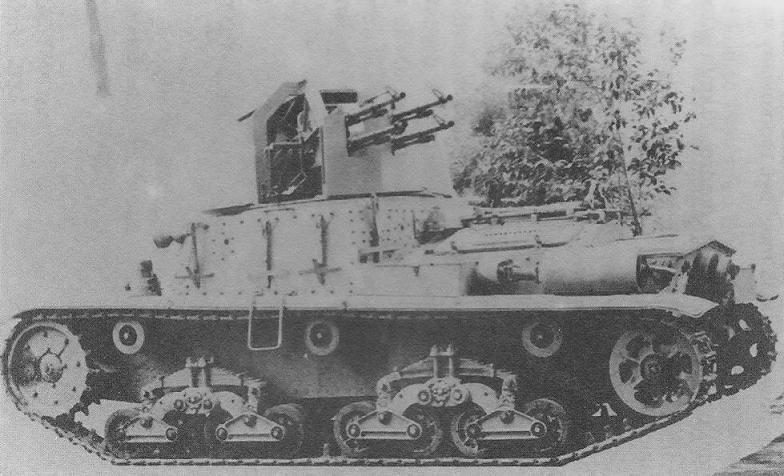|
List Of Prototype World War II Combat Vehicles
{{Short description, none ''This list contains combat vehicles which never left the design phase or had an extremely limited production (usually < 10).'' Australia * Australian Cruiser Tank Mark 3 "Thunderbolt" * Australian Cruiser Tank Mark 4 * *Canada * |
Thunderbolt Tank
AC3 Thunderbolt (Australian Cruiser III) was a cruiser tank designed and built in Australia in World War II as the successor to the AC1 Sentinel. Like the Sentinel the AC3 featured a one piece cast hull and turret. The AC3 featured a much improved design over the AC1 with better armour protection, a more powerful engine, and most importantly increased firepower. The program was terminated in 1943 before any production vehicles were completed. History Even before the AC1 Sentinel began rolling off the assembly line in August 1942 it had been seen that the 2 pounder was becoming less effective as tank armour increased in thickness on new and improved enemy tanks. To address this a 25 pounder (87.6 mm, 3.45 in) gun- howitzer was fitted to a turret on the second prototype Australian cruiser tank hull and successfully test fired on 29 June 1942. With this success decided to use the 25 pounder as a tank gun. The 25 pounder, redesigned as a tank gun, was tested on 10 October 1942 ... [...More Info...] [...Related Items...] OR: [Wikipedia] [Google] [Baidu] |
VK 3002(DB)
The VK 30.01 (D) and VK 30.02 (D), were two tank designs made by Daimler Benz submitted for the VK 30 project for a 30 tonne tank to be used by the German army. The Vollketten 30.01 (D) and 30.02 (D) in English "fully tracked ,From german: Vollketten, "fully tracked" was intended to counter the Soviet T-34 and replace the Panzer III and IV medium tanks as a heavy "breakthrough" tank. It had been requested in 1941 by the German Government. The Daimler Benz design was rejected however, and the Maschinenfabrik Augsburg-Nürnberg (MAN) design was selected and entered service as the Panther tank. Development When Germany invaded the Soviet Union in June 1941, they expected to be facing an inferior opponent. The T-34, with its sloped armor, and the heavily armored KV-1 caught the Wehrmacht off guard. Up until Operation Barbarossa, the Germans had been satisfied with the performance of their early Panzers, even after high losses during the Polish and French campaign, aga ... [...More Info...] [...Related Items...] OR: [Wikipedia] [Google] [Baidu] |
Type 4 12cm Self-propelled Gun Ho-To
Type may refer to: Science and technology Computing * Typing, producing text via a keyboard, typewriter, etc. * Data type, collection of values used for computations. * File type * TYPE (DOS command), a command to display contents of a file. * Type (Unix), a command in POSIX shells that gives information about commands. * Type safety, the extent to which a programming language discourages or prevents type errors. * Type system, defines a programming language's response to data types. Mathematics * Type (model theory) * Type theory, basis for the study of type systems * Arity or type, the number of operands a function takes * Type, any proposition or set in the intuitionistic type theory * Type, of an entire function ** Exponential type Biology * Type (biology), which fixes a scientific name to a taxon * Dog type, categorization by use or function of domestic dogs Lettering * Type is a design concept for lettering used in typography which helped bring about modern textual print ... [...More Info...] [...Related Items...] OR: [Wikipedia] [Google] [Baidu] |
Fiat
Fiat Automobiles S.p.A. (, , ; originally FIAT, it, Fabbrica Italiana Automobili di Torino, lit=Italian Automobiles Factory of Turin) is an Italian automobile manufacturer, formerly part of Fiat Chrysler Automobiles, and since 2021 a subsidiary of Stellantis through its Italian division Stellantis Italy. Fiat Automobiles was formed in January 2007 when Fiat S.p.A. reorganized its automobile business, and traces its history back to 1899 when the first Fiat automobile, the Fiat 4 HP, was produced. Fiat Automobiles is the largest automobile manufacturer in Italy. During its more than century-long history, it remained the largest automobile manufacturer in Europe and the third in the world after General Motors and Ford for over 20 years, until the car industry crisis in the late 1980s. In 2013, Fiat S.p.A. was the second largest European automaker by volumes produced and the seventh in the world, while FCA was the world's eighth-largest automaker. In 1970, Fiat Automobiles employ ... [...More Info...] [...Related Items...] OR: [Wikipedia] [Google] [Baidu] |
P43 Tank
The P.43 was a proposed Italian heavy tank ( P=pesante, heavy vehicle ) designed in April 1943, it never left the planning stage and was developed parallel to the P26/40 tank. Features The P43 or P 30/43 was developed by FIAT and Ansaldo simultaneously with the P26/40, of which it was supposed to be a heavier version. The vehicle was planned to have weighed 30 tons and would have mounted an engine of 420 hp. The gun was the same as the P.26 - the 75/34 mm cannon. While still in the design phase it was proposed to use the 90/42 gun derived from anti-aircraft cannone 90/53, or the 105/25 mm cannon mounted on semoventi instead.Cesare Falessi, Benedetto Parfi, ''Veicoli da combattimento dell'Esercito Italiano dal 1939 al 1945''Intyrama books, 1976, pagg. 83-84 ''P43 bis'' A photograph of P43 as a wooden model exists (probably on a smaller scale) along with other models of P40 and P43 bis, 30 tons with cannon that looks like it could be a lighter version of the 90/53 ... [...More Info...] [...Related Items...] OR: [Wikipedia] [Google] [Baidu] |
Fiat M16/43
The ''Carro Armato M Celere Sahariano'' (Italian for "Saharian Fast Medium Tank") or ''Fiat M16/43'' was a prototype medium tank developed by the Kingdom of Italy during World War II to match the speed and firepower of contemporary British cruiser tanks encountered by Italian forces during the Western Desert Campaign. The project was cancelled following the expulsion of Axis forces from North Africa in May 1943. Had it entered service, the tank's designation would likely have been M16/43: "M" for ''Medio'', "16" representing the vehicle's weight in metric tons and "43" being the planned year of introduction. Development In early 1941, the Italian Army requested that[...More Info...] [...Related Items...] OR: [Wikipedia] [Google] [Baidu] |
Semovente Da 149/40
The Semovente da 149/40 was an Italian self-propelled artillery piece designed in 1942. Only a single unit was built; this vehicle is displayed at the US Army Ordnance Museum, Aberdeen, Maryland. History The Italian Army was not far behind the Germans in realizing the need for assault guns and developed a string of vehicles that outwardly resembled the StuG III. These Italian assault guns were produced in appreciable numbers for they were better armoured and quicker to produce than the contemporary Italian tanks. But by the time significant numbers had been issued, Italy was effectively out of the war, and most of these guns fell into German hands. The majority of these semoventi were armed with 75 mm and 105 mm guns and howitzers, but were mostly direct fire weapons. The Italian artillery arm still needed self-propelled artillery weapons to support the armoured formations. Ansaldo therefore diverted some of its development facilities to design a powerful artille ... [...More Info...] [...Related Items...] OR: [Wikipedia] [Google] [Baidu] |
Semovente Da 20/70 Quadruplo
The Semovente da 20/70 quadruplo was an experimental self-propelled anti-aircraft weapon developed for the Italian Royal Army during World War II. Development During 1942 the Royal Italian Army had ordered the development of a self-propelled anti-aircraft weapon to be used in the North African theatre of operations and provide protection to mechanised columns, which were often the target of the Royal Air Force (RAF), without credible air defence. To save time and materials, the hull of the M15/42 tank was used as the basis for the quadruplo: The original turret was removed and replaced with a polygonal welded open turret, containing quadruple 20 mm-Scotti Isotta Fraschini 20/70 guns, with -5° to + 90° elevation; the autocannon had been specially modified so they could use disintegrating link belt ammunition resulting in an increased rate of fire 600 rounds per minute per gun. The only other change involved the removal of the two Breda 38 machine guns in the hull, the openin ... [...More Info...] [...Related Items...] OR: [Wikipedia] [Google] [Baidu] |
VK 1602 Leopard
The VK 16.02 ''Leopard'' was a planned German light reconnaissance vehicle designed from mid-1941 through to January 1943, with serial production scheduled for April 1943. It was intended to be the replacement of Panzer II Ausf. L "Luchs". The project was canceled in January 1943 before the first prototype was completed as it did not meet the requirements for 1944. A wooden mock up of the Waffenträger (English: "Weapon carrier") variant was produced. Development Development started in 1941 under M.A.N., which took inspiration from their VK 30.02 design, creating an even more armored, albeit smaller, vehicle, with sloped frontal armor (at the time the Panther prototype only had 60 mm frontal armor). As the Panther project gained importance, Wa Prüf 6 decided to remove the VK 16.02 project from M.A.N. to help them meet deadlines for the Panther project, handing it to MIAG and Daimler-Benz, with the responsibility for the hull to MIAG, and the turret and armament to Daim ... [...More Info...] [...Related Items...] OR: [Wikipedia] [Google] [Baidu] |
Geschützwagen Tiger
The ''Geschützwagen Tiger'' (''G.W. Tiger'') was a German self-propelled gun carrier of World War II that never saw service. It would have been able to carry either the 17cm ''Kanone'' K72 (Sf) or the short barrelled 21cm ''Mörser'' 18/1 which had the same mounting; with the former it would be known as ''Grille'' 17, the latter ''Grille'' 21. History The decision to build this heavy artillery based on an extended chassis of the Tiger II came in June 1942. The first prototype was tested at the end of the war. However, due to Germany being on the brink of surrender, the vehicle never saw service, and was captured by the Allies. While several armaments were considered, the most practical guns mounted were the 17 cm Kanone 18, or the 21 cm Mörser 18. As early as June 1942, it was decided to design self-propelled mounts for the heavier type of artillery so that the latter could be brought into action as quickly as possible, avoiding the break-down into small loads that transp ... [...More Info...] [...Related Items...] OR: [Wikipedia] [Google] [Baidu] |
VK 20
The VK 20 series were the proposed replacements of the Panzer IV and Panzer III tanks with entries by MAN, Krupp and Daimler Benz. It was initially projected to weigh 20 tonnes, but grew to 24 tonnes. By November 1941, the designs almost reached completion but against the professional judgement of Wa Pruef 6, political interference in December 1941 led to all of the designs being dropped. The root of this adverse decision came from encounters with increasing numbers of T-34 and KV-1 tanks. Reichsminister Fritz Todt declared that a new tank, 30 tons in weight should be designed and produced. Oberst Fichtner argued that time would be lost developing this new 30 ton tank, the number produced would be reduced and engineer bridges could not support such a tank. This new tank chosen from the VK 30 series would become the Panther, replacing the VK 20 series. This decision would place the rushed MAN Panther into production as Germany's new standard medium tank, which was plagued with issue ... [...More Info...] [...Related Items...] OR: [Wikipedia] [Google] [Baidu] |


_1.jpg)



